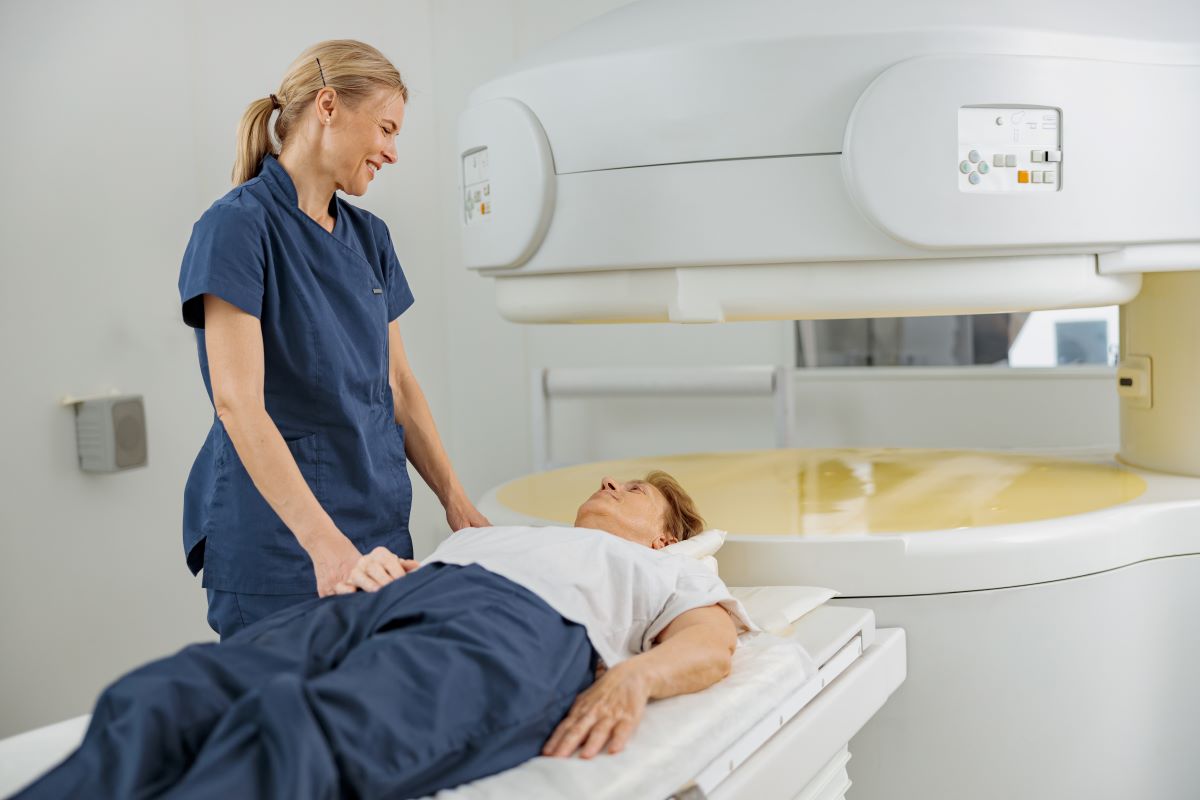What is an Abdominal CT Scan: Procedure, Uses, Side Effects and Risks

An abdominal CT Scan is a fast and pain-free procedure, which can reveal internal bleeding during cases of emergency. These scans are typically more advanced than general x-ray scanning.
If you have an upcoming abdominal CT scan or you simply wish to know more about this procedure, consider reading through the following sections.
What is the Meaning of an Abdominal CT Scan?
To understand the meaning of CT scan, you must know how x-ray imaging works. When it comes to normal X-ray procedures, a beam of energy is directed towards the body area that is being investigated.
After the energy beam passes through the abdomen, it varies and is captured by a plate behind the body portion. While a normal X-ray can provide several key details, it cannot provide much detail regarding interior organs and other structures.
On the other hand, abdominal computed tomography (CT) uses the X-ray beam, which circles around the body. This makes it possible to see the same organ from different angles.
How to Prepare for an Abdominal CT Scan?
If you have an upcoming appointment for an abdominal CT scan, ensure that you follow these points to prep for an abdominal CT scan:
- If you are pregnant or suspect that you might be, check with your doctor before undergoing the scanning.
- Wear comfortable and loose-fitting clothes.
- Leave your metal objects and jewellery at home, as they might affect the outcome of the scan.
- Some CT scans may even ask you to remove your hearing aids or removable dental implants.
- Removal of underwired bras and piercings is also important.
- If contrast material is used for imaging, your doctor may ask you not to eat or drink anything a few hours before the examination.
- Inform your doctor about all the medications you are taking and allergies, if you have any.
Note that your doctor may advise you of additional preparation based on your medical condition.
How is an Abdominal CT Scan Performed?
An abdominal CT scan may be done on an outpatient basis or while you stay at the hospital. Read the following pointers to learn about abdominal CT scan procedures:
- If you are undergoing the procedure with contrast, an intravenous line (IV) will be started on your arm for the injection.
- For oral contrast, you will have to swallow a liquid contrast. Further, the contrast may be injected rectally in some situations.
- Next, you will be made to lie on the scan table that slides into the CT scanning machine.
- As the scanner rotates, small beams of X-rays will start through your body. During the procedure, you will hear clicking sounds.
- Meanwhile, the technologist sits in another room, which will be visible to you, to control the scanning.
Upon completion of the procedure, you will be removed from the scanning table.
What are Some Common Uses of Abdominal CT Scans?
Typically, an abdominal CT scan is recommended if you have severe pelvic or abdominal pain. Doctors may also use this imaging to detect diseases of internal organs. Some common uses of this procedure include:
- Infection-related conditions such as abscesses, pyelonephritis, or infections like appendicitis.
- Pancreatitis, liver cirrhosis, or an inflammatory bowel disorder such as Crohn's disease or ulcerative colitis.
- Lymphoma, as well as malignancies of the liver, kidneys, pancreas, ovaries, and bladder.
- Bladder and kidney stones.
- Abdominal aortic aneurysms (AAA), trauma-related damage to the liver, kidneys, spleen, or other internal organs in the abdomen.
- Help with minimally invasive tumour treatments, abscess drainages, and other operations including guided biopsies.
- Prep for surgery like organ transplants and evaluate the results.
- Design, schedule, and effectively deliver radiation treatments for malignancies while also keeping track of chemotherapy outcomes.
What are the Side Effects of an Abdominal CT Scan?
Commonly, there is no special care required after a CT of the abdomen. However, if you were put under contrast dye during the procedure, you might be kept under observation for a while to look out for any adverse effects or reactions, like itchiness, swelling, rash, or breathing difficulties.
After the scanning, you should call your doctor if you experience any pain or swelling at the IV site. These symptoms could signify an infection or reaction.
What are the Risks of an Abdominal CT Scan?
Some common risks of abdominal CT scan include:
- Contrast dye allergy
- Radiation exposure
- Damage to the kidneys due to the contrast dye
Additionally, note that contrast colouring can cause allergies in some people. Tell your doctor if you've ever experienced an allergic response to an injection of contrast dye.
What to Do After an Abdominal CT Scan?
You can continue your daily activities as usual after the abdominal CT. However, if you feel uneasy, consider informing your doctor right away. Additionally, if you have diabetes or kidney illness, you might need to drink more water following the test to assist your body in getting rid of the iodine.
Although the CT of the abdomen doesn't hurt, lying still for that long could be uncomfortable or painful, especially if you just had surgery or other intrusive procedures like an accident. To reduce any discomfort or agony, the technologist will take all reasonable comfort measures and finish the treatment as quickly as feasible.












